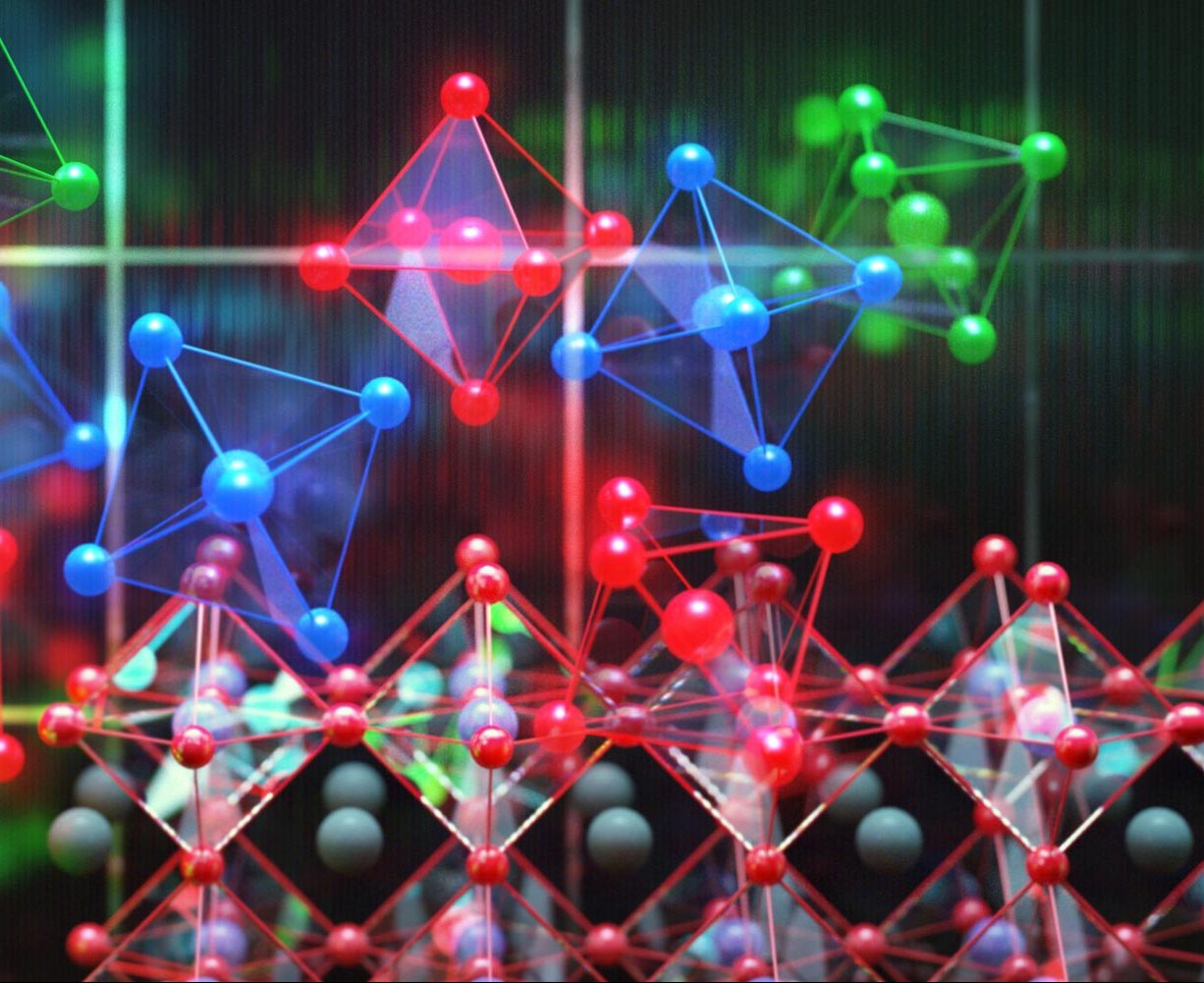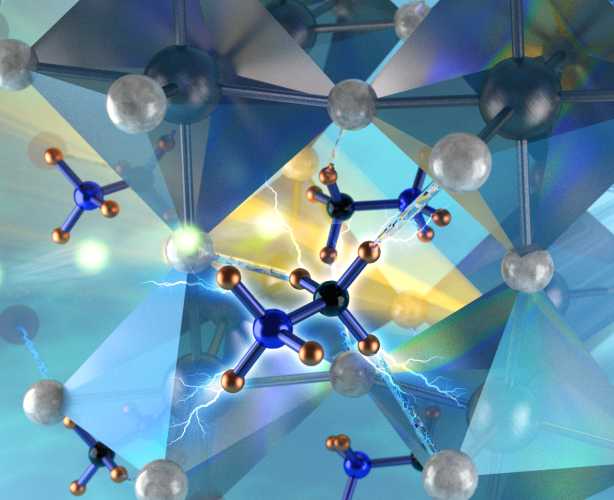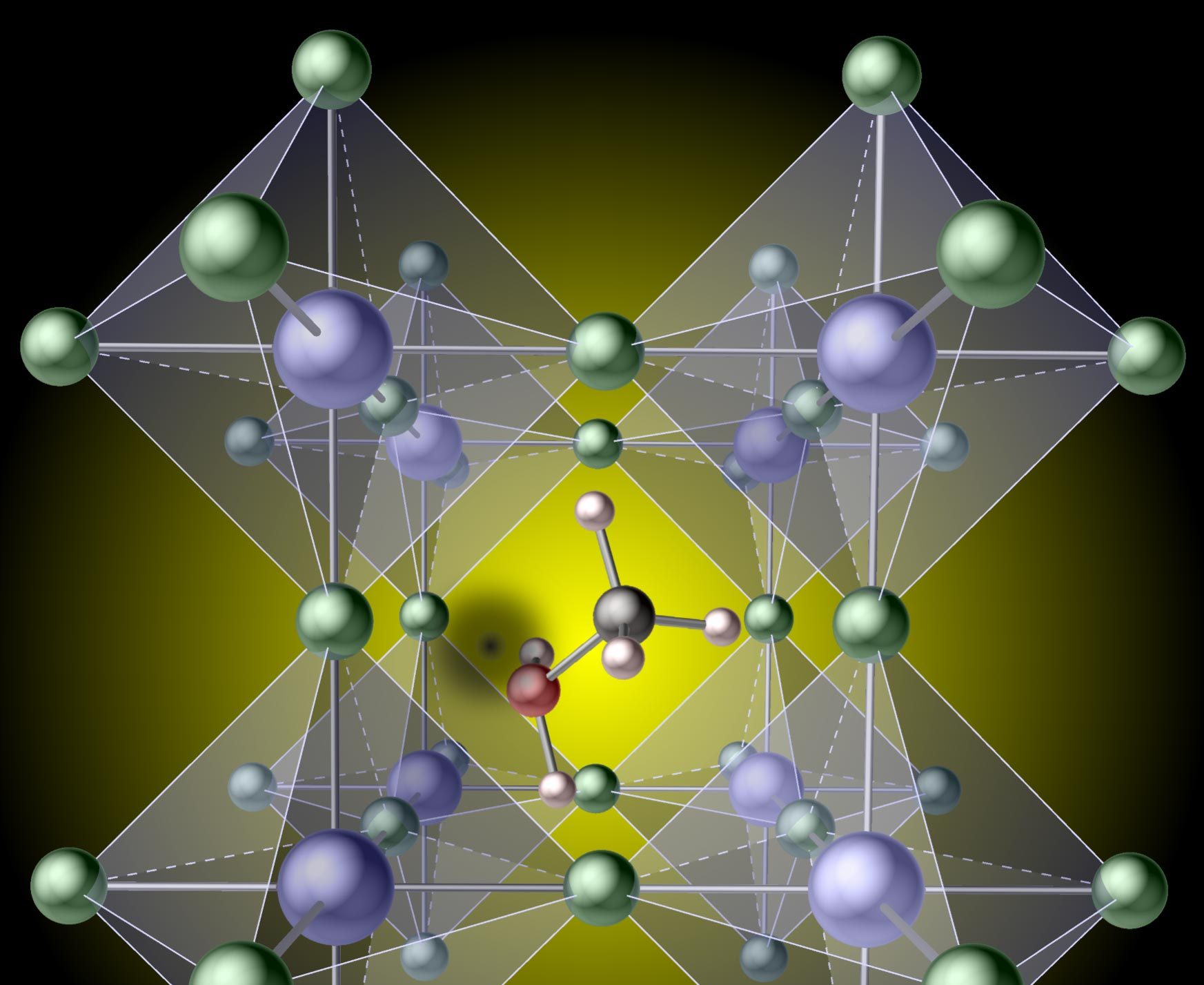RESEARCH
Perovskite solar cells



A perovskite is a material that has the same crystal structure as the mineral calcium titanium oxide, the first-discovered perovskite crystal. Generally, perovskite compounds have a chemical formula ABX3, where ‘A’ and ‘B’ represent cations and X is an anion that bonds to both. A large number of different elements can be combined together to form perovskite structures. Using this compositional flexibility, scientists can design perovskite crystals to have a wide variety of physical, optical, and electrical characteristics. Perovskite crystals are found today in ultrasound machines, memory chips, and now – solar cells. Perovskite materials offer excellent light absorption, charge-carrier mobilities, and lifetimes, resulting in high device efficiencies with opportunities to realize a low-cost, industry-scalable technology. Achieving this potential will require us to overcome barriers related to stability and environmental compatibility, but if these concerns are addressed, perovskite-based technology holds transformational potential for rapid terawatt-scale solar deployment. The basic materials properties have also sparked interest in using hybrid perovskite semiconductors in a broader class of energy applications that span traditional electronic and optical systems.
Our group has achieved an efficiency of ~ 18.5% in single halide perovskite solar cells. Many factors affect the performance and stability of perovskite solar cells (PSCs). We have investigated how defects affect the photovoltaic performance of PSCs. A qualitative analysis of the defects states has been done to investigate the influence of traps on the device performance before and after light soaking. Due to light soaking, the solar cells have shown improved open circuit voltage, fill factor (FF), and power conversion efficiency without much change in short circuit current. The devices have returned to their original state upon extended exposure to dark condition. The defects or trap-assisted recombination process is confirmed by estimating the ideality factor in the dark as well as from the light intensity dependent open circuit voltage measurements. The defects density of states of PSC studied are found to reduce with a shift in peak energy which is attributed to a reduction in the energy disorder with light soaking. The anomalous behaviour in the performances and degradation of PSCs mainly arise from ionic/charged defects movement. Grain boundaries and interaction with the selective interfaces are found to be the major routes for ion migration and charge accumulation in PSCs. We have also investigated the effect of defects mitigation on the photovoltaic performance of different types of perovskite solar cells using impedance and transient spectroscopy as a function of dc voltage bias. It is found that defects or ion migration and charge accumulation during the modulation of the internal electric field with voltage is the key factor that alters the device performance. We have also demonstrated acetylammonium chloride as an additive to effectively control the morphology and crystal quality of the methylammonium lead iodide perovskite film and achieved better efficiency and stability in perovskite solar cells. Quality of the films can be improved by the addition of suitable additives. Acetyl ammonium chloride resulted in the formation of uniform sized perovskite film of larger grains and passivation of defects present in the grain boundaries and surface of perovskite film. The defect density has reduced, which induced non radiative recombination decay pathways and enhancement in open circuit voltage and obtained improved power conversion efficiency and high operational stability.
